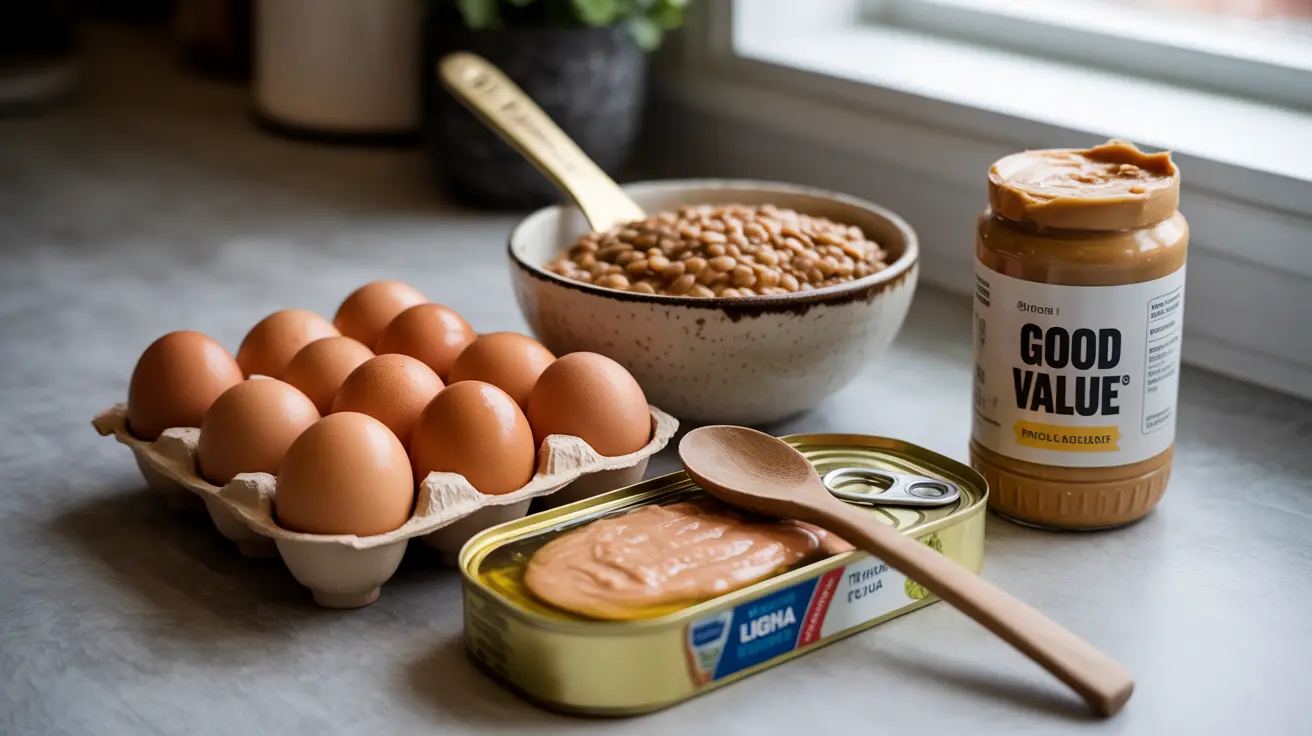Getting enough protein doesn't have to strain your wallet. Whether you're a student, managing a tight budget, or simply looking to optimize your grocery spending, there are numerous cost-effective protein sources that can meet your nutritional needs. This comprehensive guide will explore the most affordable protein options and show you how to maintain a protein-rich diet without breaking the bank.
Animal-Based Budget Protein Options
Several animal-based proteins offer excellent nutritional value at a reasonable cost. These options provide complete protein profiles with all essential amino acids.
Eggs: The Versatile Protein Powerhouse
Eggs remain one of the most economical sources of high-quality protein. One egg provides about 6-7 grams of protein and contains vitamins, minerals, and healthy fats. Buy them in bulk for additional savings.
Canned Tuna and Sardines
Canned fish offers an impressive protein-to-price ratio. These options are not only rich in protein but also provide essential omega-3 fatty acids and vitamin D. Look for sales and stock up on these shelf-stable proteins.
Chicken Quarters and Whole Birds
Buying whole chickens or leg quarters instead of individual breasts can significantly reduce costs while providing excellent protein content. Learn basic butchering skills to maximize your savings.
Affordable Plant-Based Proteins
Plant-based proteins often offer the most budget-friendly options while providing additional health benefits through fiber and micronutrients.
Legumes: The Budget Champion
Dried beans, lentils, and peas offer exceptional value. These protein-rich foods cost pennies per serving and provide sustained energy, fiber, and essential minerals. Buy them dry rather than canned for maximum savings.
Whole Grains with Protein Power
Quinoa, oats, and brown rice contain significant protein amounts while being incredibly affordable. These options also provide complex carbohydrates and fiber for sustained energy.
Peanut Butter and Other Legume Spreads
Nut and legume butters offer concentrated protein in a convenient form. Choose natural varieties without added sugars for the best nutritional value.
Smart Shopping Strategies for Protein
Implementing strategic shopping habits can help you maximize your protein intake while minimizing costs.
Bulk Buying Benefits
Purchase protein sources in bulk when prices are favorable. Many protein-rich foods can be frozen or stored for extended periods.
Seasonal Shopping
Buy proteins when they're on sale and learn to stock up during promotional periods. Consider freezing meat and fish when prices are low.
Frequently Asked Questions
What are some of the cheapest animal-based protein sources I can include in my diet? Eggs, chicken quarters, canned tuna, and sardines are among the most affordable animal protein sources. These options provide complete proteins at a fraction of the cost of premium cuts of meat.
Which plant-based proteins are affordable and provide complete essential amino acids? Quinoa is a complete protein source, while combining rice and beans or lentils with whole grains creates complete protein profiles. These combinations are highly affordable and nutritionally complete.
How can I get enough protein on a tight budget without sacrificing nutrition? Focus on mixing both plant and animal proteins, buy in bulk when possible, choose whole forms over processed options, and learn to prepare dried beans and legumes. This approach ensures adequate protein intake while maintaining affordability.
Are there health benefits to choosing cheap plant proteins over more expensive animal proteins? Yes, affordable plant proteins often come with additional benefits like higher fiber content, lower saturated fat, and more micronutrients. They're also typically better for the environment and can help reduce inflammation.
What practical tips can help me save money while ensuring adequate protein intake? Buy in bulk, choose whole foods over processed options, learn to cook from scratch, stock up during sales, and combine different protein sources throughout the week. Consider buying frozen options and learning to properly store and preserve proteins.




